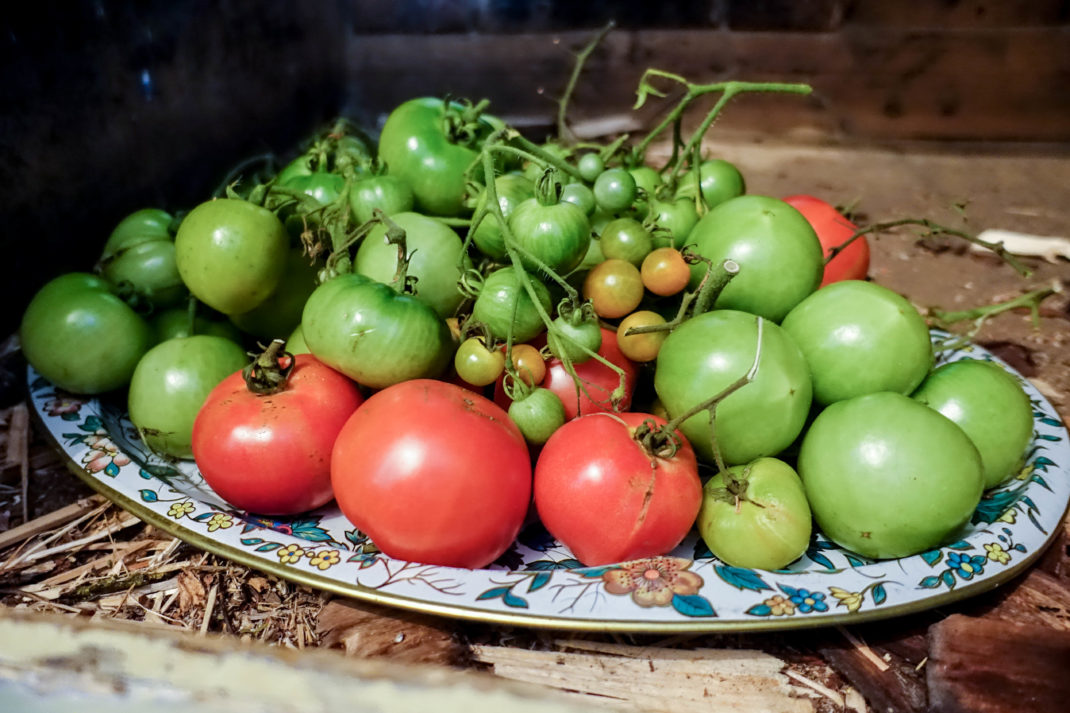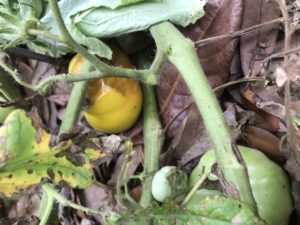To avoid pests and diseases, we harvest tomatoes and peppers (both sweet and hot) at the first sign of blush (red, yellow, gold, purple, black). They are then put on our kitchen counter or other surface (not necessary to be in sunlight) to ripen. In this way, we prevent damage that would have happened between the time we harvest and the time the fruit is fully ripe on the vine.
 When fully colored, we eat tomatoes in salads, make salsa, cook in other dishes or give them away. For squash, beans, cucumbers and okra, we eat as much as we want, can for later use during the year and give away the rest. Often, we give away not fully ripe tomatoes along with the ripe ones, so the gift continues to give over an extended period of time.
When fully colored, we eat tomatoes in salads, make salsa, cook in other dishes or give them away. For squash, beans, cucumbers and okra, we eat as much as we want, can for later use during the year and give away the rest. Often, we give away not fully ripe tomatoes along with the ripe ones, so the gift continues to give over an extended period of time.
 We collect all damaged tomatoes, peppers and other fruit and get rid of them (not in the compost). This helps prevent pests and disease for the remaining crop. To do this, every day after harvesting, we walk through the garden with a bucket and collect all fallen or damaged fruit. In this season, that includes rotted squash, tomatoes with holes or rot, damaged peppers and eggplants. If a tomato plant (or bean or squash plant) is really diseased or damaged from pests and the fruit is in bad shape, we remove the plant and bag it. This helps keep the other plants healthy.
We collect all damaged tomatoes, peppers and other fruit and get rid of them (not in the compost). This helps prevent pests and disease for the remaining crop. To do this, every day after harvesting, we walk through the garden with a bucket and collect all fallen or damaged fruit. In this season, that includes rotted squash, tomatoes with holes or rot, damaged peppers and eggplants. If a tomato plant (or bean or squash plant) is really diseased or damaged from pests and the fruit is in bad shape, we remove the plant and bag it. This helps keep the other plants healthy.
